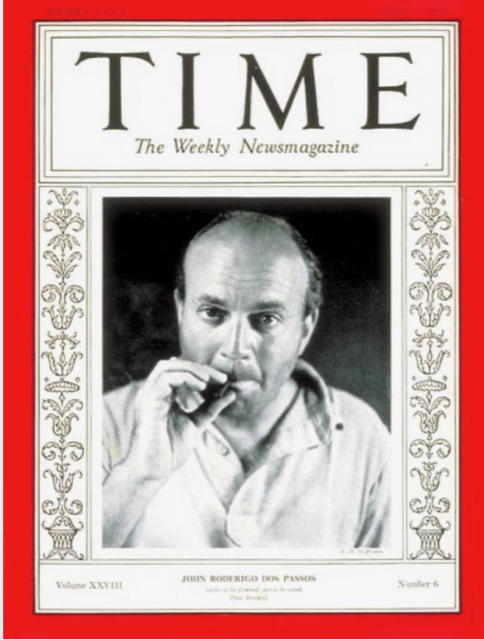
October 1, 2023
by Philip Gambone
John Dos Passos' interest in Mexico was kindled as far back as his undergraduate days at Harvard. In the literary diary that he kept during his college years, Dos Passos, an inveterate reader, noted that he had finished John Reed's Insurgent Mexico in early October 1914.
"A most startlingly vivid picture of Mexico & Mexicans from a broad human point of view," he wrote, adding that he liked how Reed was able to incorporate "an immense amount of interesting personal anecdote & some amazingly fine descriptions." He went on: "But best of all is the lack of prejudice and humanity in the work. The author is not afraid of raw facts & forces—perhaps at times he is a trifle sensational—but he is saved from Jack Londonism by a keen sense of humor & a certain refinement of touch. There are some marvelously excellent studies of character; and his point of view is sympathetic and comprehensive."
It would be more than 12 years before Dos Passos saw Mexico firsthand himself. Accounts differ as to when exactly he arrived. In his memoir, The Best Times, he recalled that he was in Mexico City "by November 1, [1926], el día de los muertos." But Dos Passos' biographer, the meticulous and painstaking Townsend Ludington, says he took a train from Laredo to Mexico City in mid-December. Whatever the case, Dos Passos remained in Mexico all winter, returning in March 1927.
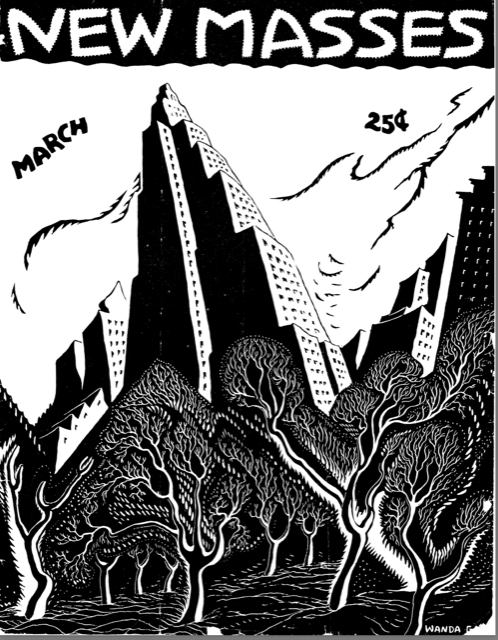
The 30-year-old Dos Passos had already published three novels and was actively contributing essays to the leftist journal New Masses. Needless to say, Mexico, where he found "Marxism aplenty," greatly appealed to him.
"It was the Marxism of Orozco and Diego Rivera, whom you could see at work on their murals in the Secretariat of Education," he wrote in his memoir. He admired how the muralist movement amounted to "a challenge shouted in the face of the rest of the world." He compared this vital, revolutionary art to the art back home. "All we have in New York to answer with," he wrote in a March 1927 essay in New Masses, "are a few private sensations and experiments framed and exhibited here and there, a few watercolors like Marin's, and a lot of warmed-over truck, leavings of Europeans fads."
Dos Passos spent a lot of his time in Mexico hanging out with radicals. "His sympathies," Ludington writes, "were against those who exploited the poor." The peasants and workers, whom Dos Passos dubbed "Juan Sin Tierra," were, he wrote in another essay in New Masses, "disunited, confused by political rows, sleeping on a straw mat on the floor, eating off a few tortillas a day and a speck of chile to take away the raw taste of the corn, standing up in their fields against the Catholic Church, against the two world groups of petroleum interests, against the inconceivably powerful financial juggernaut of which Andrew Mellon is gradually showing up as the most conspicuous figurehead with Coolidge and [Secretary of State] Kellogg as his hard working errand boys."
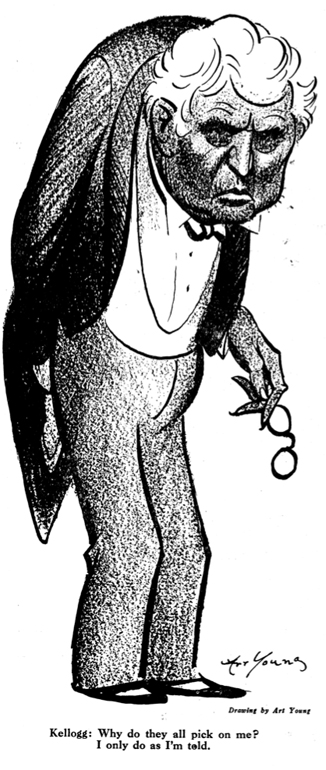
Frank B. Kellogg
*
When he returned from Mexico, the fervently left-leaning Dos Passos resumed working with the New Playwrights Theatre, a futurist drama company that he'd first become involved with in 1925. "The day of the frail, artistic enterprise, keeping alive through its own exquisiteness, has passed," he wrote in an article, "Towards a Revolutionary Theatre," in New Masses (December 1927). "A play, or a book, or a picture has got to have bulk, toughness, and violence to survive in the dense clanging traffic of twentieth century." It was a manifesto clearly inspired by his time in Mexico.
The New Playwrights folded in 1929, but its demise did not quell Dos Passos' eagerness to eliminate hokum from the arts. "Dehokumize" was his mantra. He was out to get rid of the mushiness and "padded brocade" so prevalent in arts practiced by "the rotting egos of the discouraged sons of doctors, lawyers and ministers."
To that end, Dos Passos began work on a new book, one that would exemplify the precepts he had articulated for a revolutionary theatre—vigor, imagination, a focus on American working-class life—and apply those ideals to the novel. That novel, The 42nd Parallel (1930), interlarded nonfiction elements—reportage, headlines and "newsreels," verbal snapshots, brief biographies of real people—into his sprawling, expressionistic story. Dos Passos was eager to show, as his biographer, Townsend Ludington, puts it, "the swirl of life during the years 1916-1919."
Much later, in an interview with the Paris Review, Dos Passos recalled that in The 42nd Parallel, which became the first volume in his U.S.A. trilogy, he had been "trying to get something a little more accurate than fiction." It was to be "a contemporary commentary on history's changes, always seen by some individual's ears, felt through some individual's nerves and tissues." He wanted to be "a sort of second-class historian of the age" he lived in.
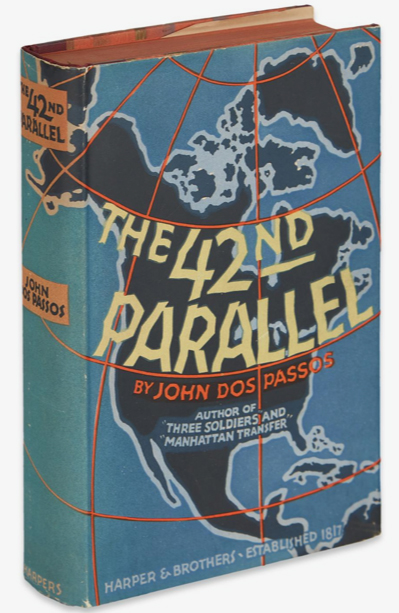
In the same way that the Mexican muralists had packed their paintings with the full spectrum of political, historical and social life, Dos Passos strove to pack everything into his novel: "songs and slogans, political aspirations and prejudices, ideals, hopes, delusions, frauds, crackpot notions out of the daily newspapers."
The trilogy had no plot, only a series of narratives loosely woven together. Those narratives—they read like short stories or novellas—are peopled by a group of diverse, ordinary, working-class Americans who are, as the novelist E. L. Doctorow once noted, "bent into service of the institutions of modern industrial society, whatever those institutions might be."
The search for work, for adventure, for get-rich schemes, for "getting into things" propels some of the main characters in The 42nd Parallel to go to Mexico. The most prominent among them is Fenian O'Hara McCreary, known as Mac, a "Shanty Irish" fellow whose family is down on their luck. After his mother dies, the young Mac is taken under the wing of his uncle, who teaches him that poverty is the fault of a "goddam lousy system [that] don't give a man the fruit of his labor."
Mac is a kind of early twentieth-century Candide—wide-eyed but easy prey for con artists, floosies, and other "sonsobitches." As the prospects for his social advancement dwindle—"I used to think I might amount to somethin' in the world"—and his political consciousness grows, Mac becomes inspired by the Mexican Revolution. When his wife leaves him, he decides he's free "to see the country now, to work for the revolution, to go on the bum again."
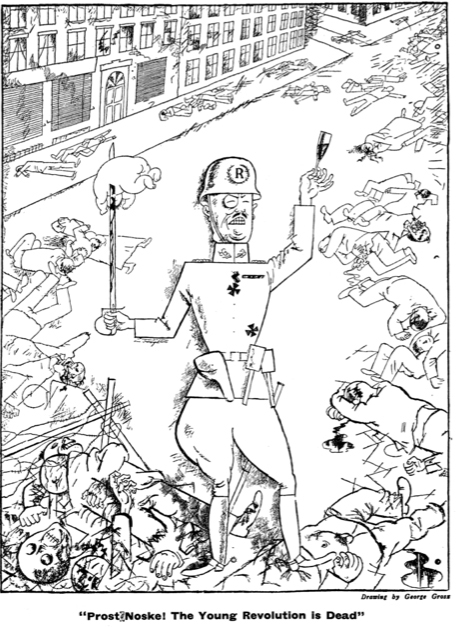
With 25 dollars in his pocket, he travels to El Paso, walks across the international bridge, and enters the "dusty-bustling adobe streets of Juarez." It's 1911, and the fall of the dictator Porfirio Diaz is imminent. In Mexico, Mac meets revolutionaries and anarchists. "I want to kinda get into the revolution," he tells one of them.
When we next encounter him, 150 pages and a few years later, Mac—with only "a vague idea of the politics of the revolution"—is eager to join Zapata. With other Zapatistas, he boards a train and heads for the capital.
Like his college-time idol, John Reed, Dos Passos vividly describes the perils of life in Mexico during the revolutionary era: "Occasionally at night bullets came through the windows. Near Caballos a bunch of men on horses rode the whole length of the train waving big hats and firing as they went. The soldiers in the caboose woke up and returned the fire and the men rode off in a driving dustcloud."
When, after five days on the train, he arrives in Mexico City, Mac is so worn out he can't remember what he'd intended to do when he reached his destination. In a bar, he meets an American oil prospector who disabuses Mac of his idealistic notions about Zapata. "He's the bloodthirstieth villain of the lot," the American tells Mac.
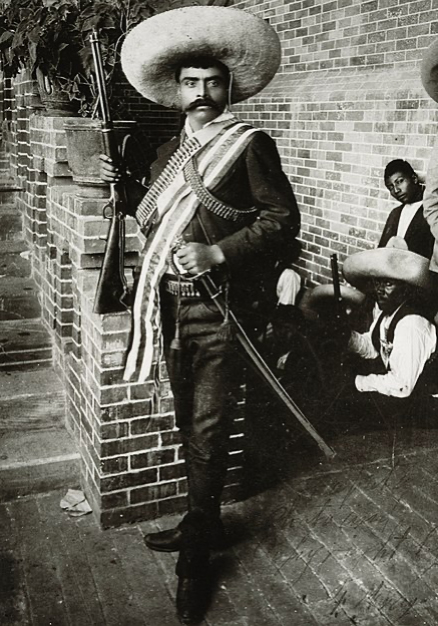
Mac finds work at The Mexican Herald, settles into an apartment with a Mexican girl named Concha, and eventually opens a book shop. This cozy domestic setup and the contradictory messages he picks up about the revolution lead him to "think less often about going out to join Zapata." As Concha tells him, "Every poor man socialista. But when you get rich, quick you all very much capitalista."
When Carranza's government falls to the troops of Villa and Zapata, Mac decides to sell out and go back to the States. In the chaos of the mass exodus of Americans, he considers abandoning Concha, but in the end, his good conscience wins out.. He gives up his ticket for a boat out of Veracruz and returns to her. That's the last we hear of him in this first volume of Dos Passos' trilogy.
As a setting, Mexico figures far less prominently in The 42nd Parallel than it does, for example, in D.H. Lawrence's The Plumed Serpent or Malcolm Lowry's Under the Volcano. Nevertheless, Dos Passos' portrayal of Mexico is vivid, gritty, and nuanced—a matrix against which he explored American attitudes toward wealth, politics, foreigners, morality.
In his review of the novel in the New York Times (March 2, 1930), John Chamberlain interpreted the book as "a satire on the tremendous haphazardness of life in the expansionist America we all have known… It is an America "on the make' that Mr. Dos Passos satirizes, an America filled with people with vague hopes of success—no matter what success."
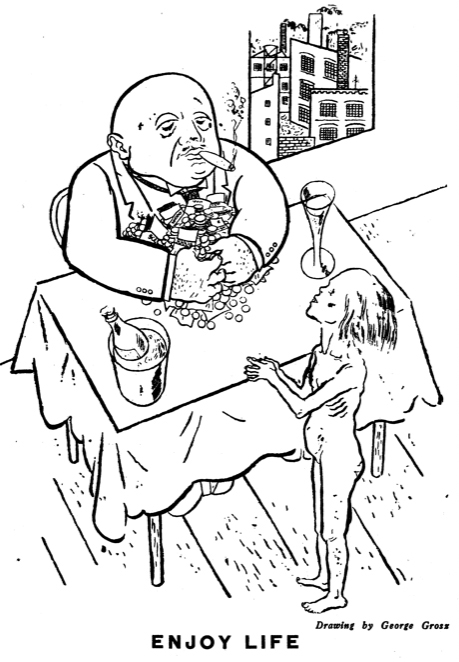
The dark, reportorial quality of the satire in The 42nd Parallel mirrors, I think, the astringency in the drawings of George Grosz, a German contemporary of Dos Passos. Grosz's drawings were "constant blows in the face of officers, capitalists, and all the other profiteers of a brutal society." Those words were written by Julian Gunperz, in the same issue of New Masses where Dos Passos had published his first piece on Mexico. Grosz and Dos Passos, each in his own medium, were artistic comrades in arms.
Dos Passos never wrote a big Mexican novel, but in The 42nd Parallel he succeeded in presenting, as he once said of John Reed, the "raw facts & forces" of a salient moment in Mexican history. It was a superbly "dehokumized" accomplishment.
**************
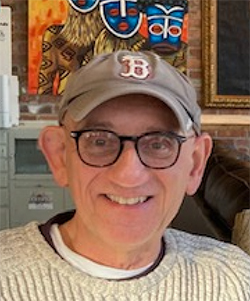
Philip Gambone, a retired high school English teacher, also taught creative and expository writing at Harvard for twenty-eight years. He is the author of five books, most recently As Far As I Can Tell: Finding My Father in World War II, which was named one of the Best Books of 2020 by the Boston Globe. It is available through Amazon, at the Biblioteca bookshop, and at Aurora Books off the Calzada de la Aurora.
**************
*****
Please contribute to Lokkal,
SMA's online collective:
 ***
***
Discover Lokkal:
Watch the two-minute video below.
Then, just below that, scroll down SMA's Community Wall.
Mission

Visit SMA's Social Network
Contact / Contactar

